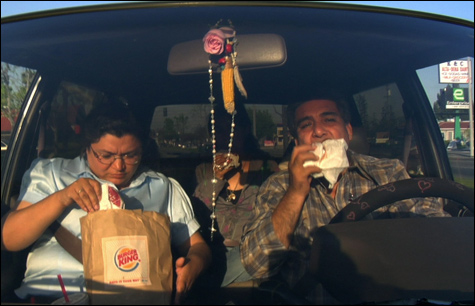So clearly, on one level, foodies should be thankful for air travel and interstate highways. "On my book tour," says Kurlansky, who lives in New York City, "a journalist in Seattle said, 'You're coming at just the right time, because the Copper River Salmon is coming in!' I didn't have the heart to tell him that I know the Copper River Salmon is coming in because my local fish store carries it."
Yet for all the gastronomic convenience of refrigerated transportation, reading Kurlansky's book one can't help feeling sentimental for a past many of us never experienced — a simpler time when regions had their own dishes and libations: the California grunion fry, Kentucky Burgoo, Oregon Blue Ruin.
"Before World War II, people were much more rooted to the place they lived in, and that was reflected in the food," says Kurlansky. "Not only because the food was locally produced, but the recipes were local, the traditions were local. People had their own approach that varied literally from county to county, sometimes from town to town."
Now, as has been said ad nauseum, 50 states filled with chain stores and strip malls have ensured that everything looks and tastes the same. "It would be nice to travel around America and have the food change everywhere you went," says Kurlansky. "I just got through doing a book tour, a different town every day. I just struggle to find something local everywhere I go."

LOW INCOME, HIGH FAT It’s no accident that the biggest predictor of obesity is income level. According to Robert Kenner’s new documentary, Food, Inc., the government is effectively subsidizing “bad calories.” |
A failed promise
The mass industrialization of food production that happened so quickly in the middle of last century promised more choice at cheaper prices — a better way to feed the world. But agribusiness, factory farms, and other forms of corporate food manufacturing didn't quite deliver on that promise.
"It was accepted that there was going to be a decline in food quality," says Kurlansky. "In exchange, it was supposed to end world hunger, and food was supposed to be produced more efficiently. Well, it hasn't made a dent in world hunger, and it's completely inefficient: it wastes energy, it pollutes, it's harmful to the landscape, it destroys cultures. It turns out not to be an advantageous way to produce food in any way."
This is put on vivid display in Kenner's disturbingly dystopian film, a whirlwind tour through the genetic laboratories, industrialized charnel houses, and chemical-sprayed crop fields filled with illegal immigrants that have come to characterize modern American food production.
Kenner says he didn't intend Food, Inc. to be a piece of muckraking — even though, in one scene showing an overcrowded cattle pen in which the animals wallow knee-deep in their own feces, it almost literally is.
"I'm not Michael Moore looking to prove a point," he says. "Really, I had hoped simply to do an exploration of how we eat. I was thinking I could talk to all the food producers, be they organic farmers or agribusiness. I knew they might not let me into their plants, but I thought they would talk."
They didn't. In fact, many corporations went so far as to threaten the ranchers and farmers with retribution if they talked. Thanks in part to those zipped lips, the film took six years to make.
"I realized these guys do not want you thinking about it," says Kenner. "They don't want you to crack this veil, to think about this food. They want [to perpetuate] the myth of the farm with the white picket fence and the red barn."
But it's not like that anymore: "In reality, this food has been fundamentally transformed."
One of Food, Inc.'s most viscerally disturbing scenes is a peek inside a chicken house. The farmer featured, Maryland-based Perdue grower Carole Morison, was the only one, out of dozens asked, to allow cameras, thanks to widespread fears of corporate reprisals. "It's just gotten to the point where it's not right what's going on," she sighs. "I've just made up my mind, I'm gonna say what I have to say."
The coop is overcrowded, the floor a vast carpet of weakly squawking chickens, overbred to grow twice the size in half the time, too heavy to even stand. Here and there, birds lay dying, collapsed under their own weight. Morison scoops them up and tosses them with dull thuds into a pile. "This isn't farming," she says. "This is just mass production."
"Somehow that scene reverberates a lot for people, but it's not just the chicken," says Kenner. "It's as much the tomato, or the lettuce. Everything has been transformed. The tomato" — ripened in a warehouse with ethylene gas — "has no taste and no nutrition. But it looks red!"
Kenner describes attending a hearing in Sacramento about the labeling of cloned meat. The debate was not whether cloned meat was good or not. It was about whether you had to tell the consumer he or she was buying cloned meat.